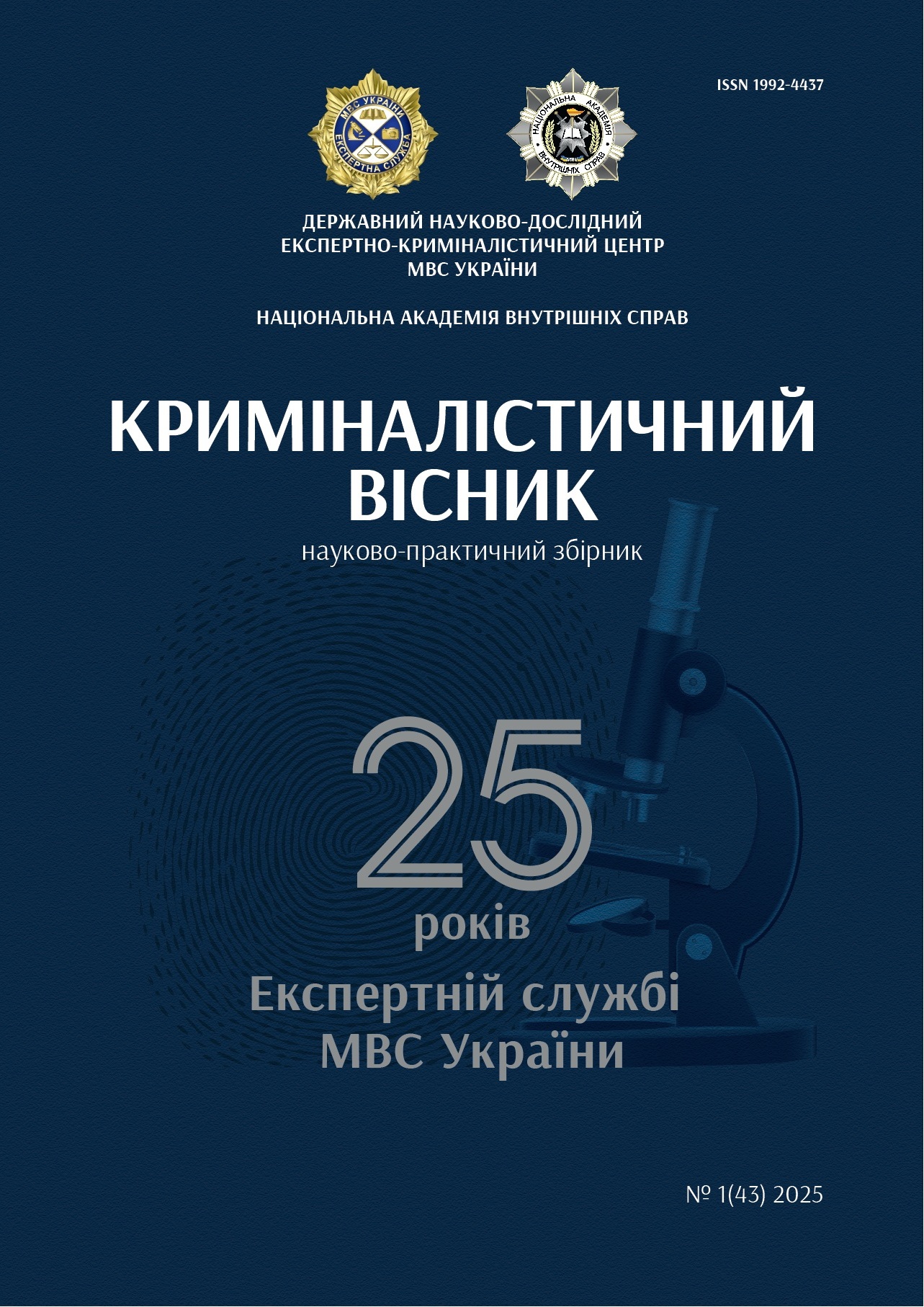CHEMICAL TRAPS AS A MEANS OF DETECTION AND PREVENTION OF THEFT
DOI:
https://doi.org/10.37025/1992-4437/2025-43-1-47Keywords:
documentation of criminal offenses against property, special chemicals, dyes, means of blocking the storage facility for material values, operational-search activitiesAbstract
In the course of the research, the issues of documenting such
a category of criminal offenses against property as thefts at
storage facilities of commodity and material values using
special chemicals were raised and theoretical and applied
approaches to legal support for the actions of employees
of criminal investigation units and police officers (community
police officers) in detecting and preventing thefts of material
values using chemical traps were highlighted, which determines
the purpose of the article. The methodological basis of the
research is general scientific and special methods, in particular
dialectical, systemic analysis, synthesis, statistical, terminological,
modeling, theoretical generalization. The scientific novelty of the
obtained results lies in specifying the concept of a chemical trap.
In addition, the sequence of actions of employees of criminal
investigation units and police station officers (community police
officers) for the detection and prevention of criminal offenses,
such as theft, and the procedure for registering the result of the
activation of a chemical trap at the scene of a criminal offense
have been developed. The issue of the use of certain types of
special chemicals in chemical traps and their further research
has been highlighted. In order to effectively resolve problematic
issues of documenting thefts of material values, it is proposed
to develop a departmental regulatory act in the form of
instructions on the procedure for using chemical traps by relevant
police officers. The practical significance of the study lies in
developing a sequence of application of a tool for documenting
criminal offenses against property and the procedural procedure
for registering the result of the activation of a chemical trap at
the scene of a criminal offense.



